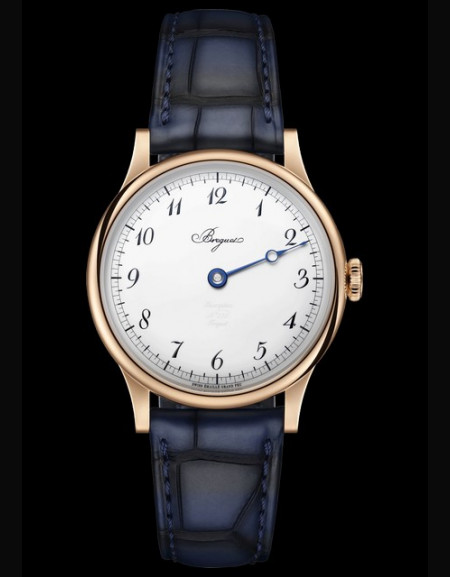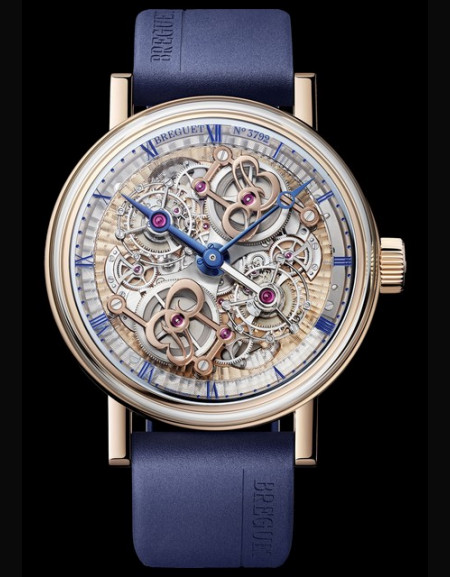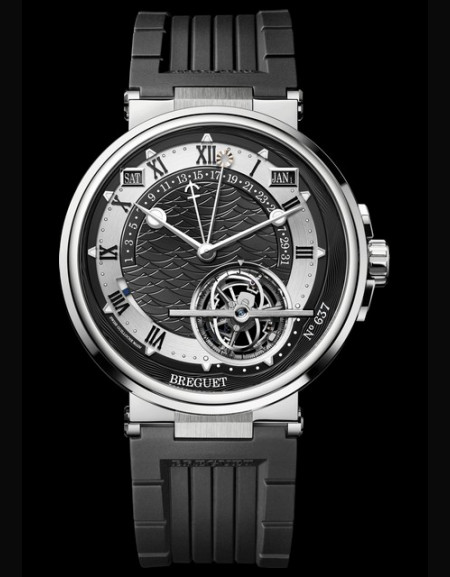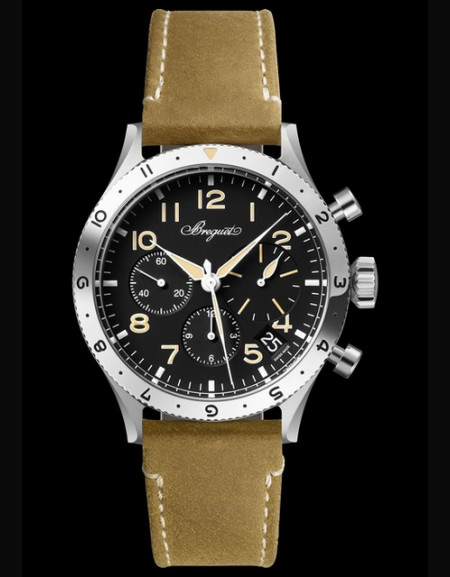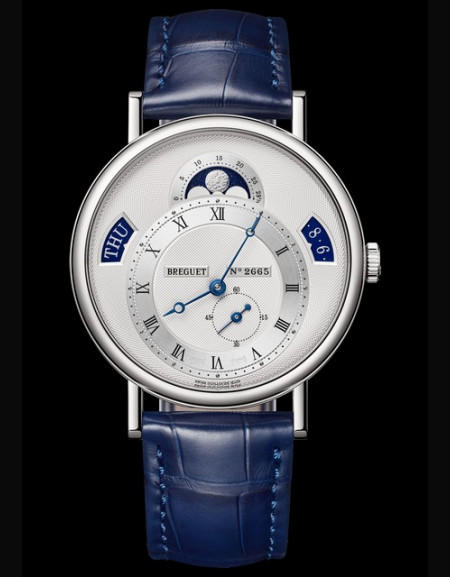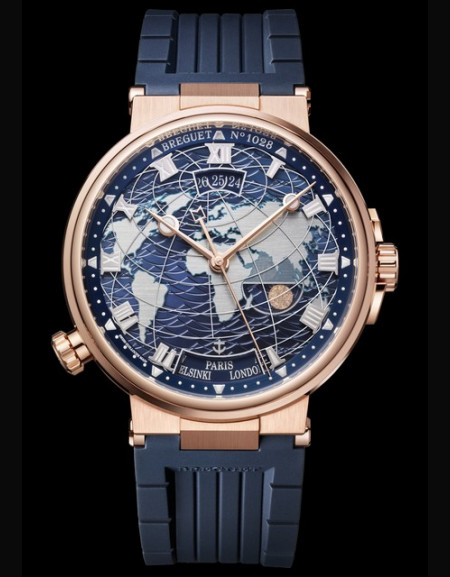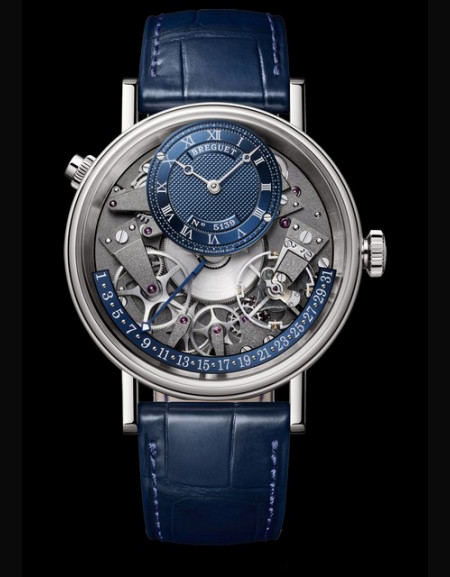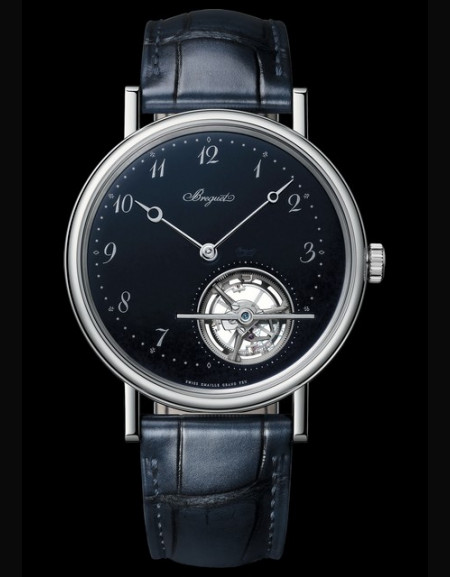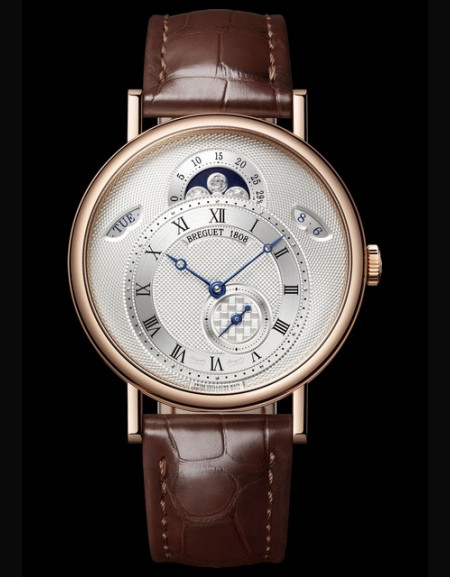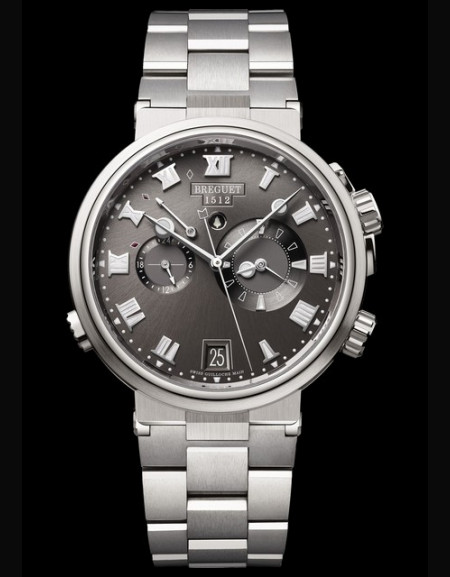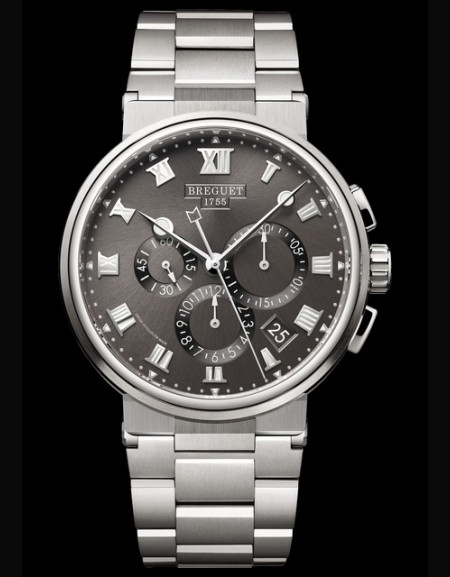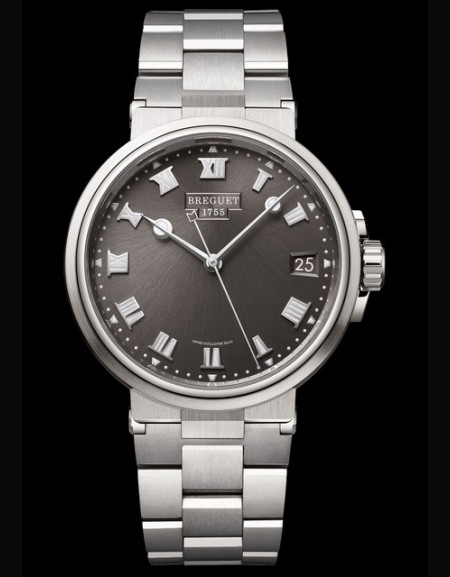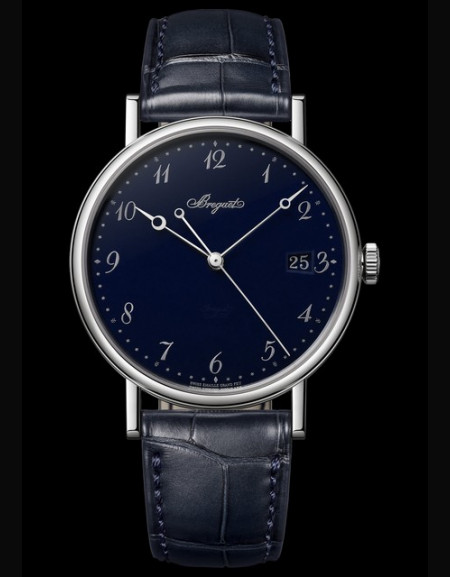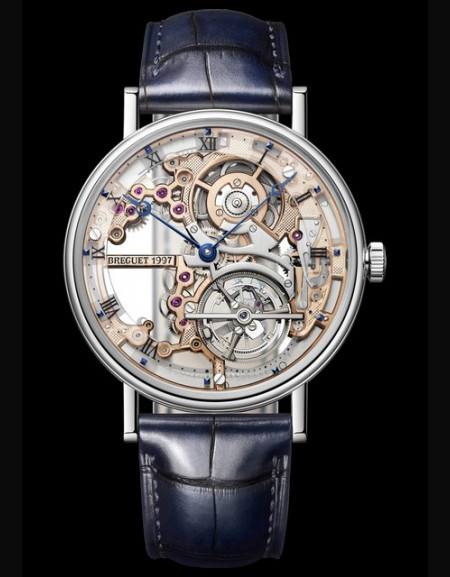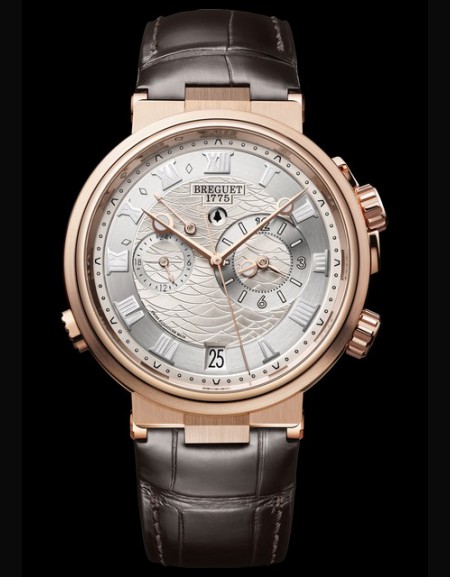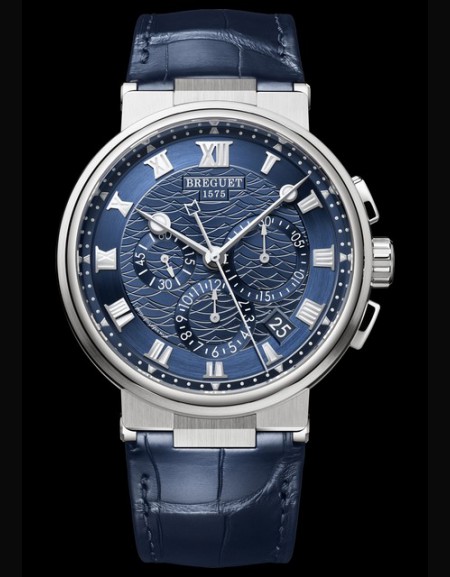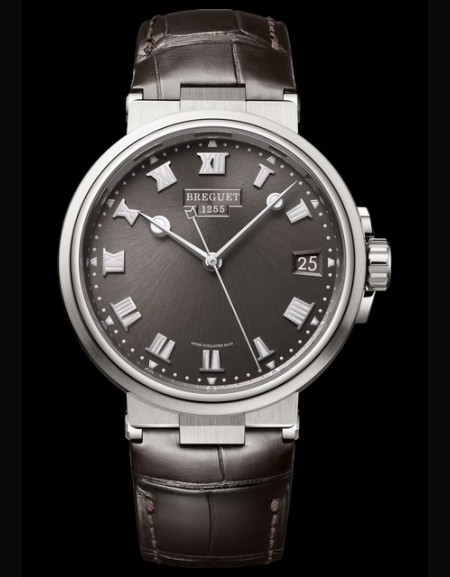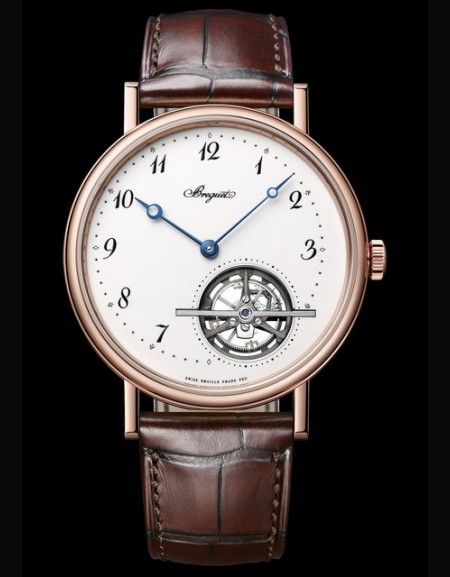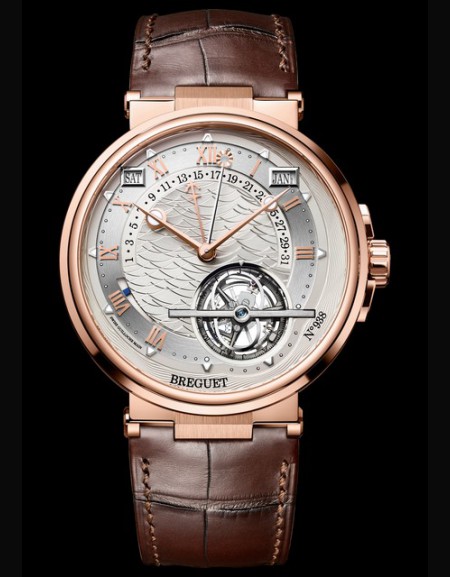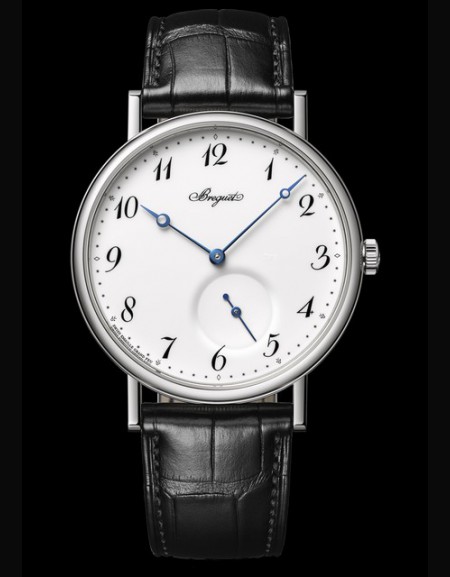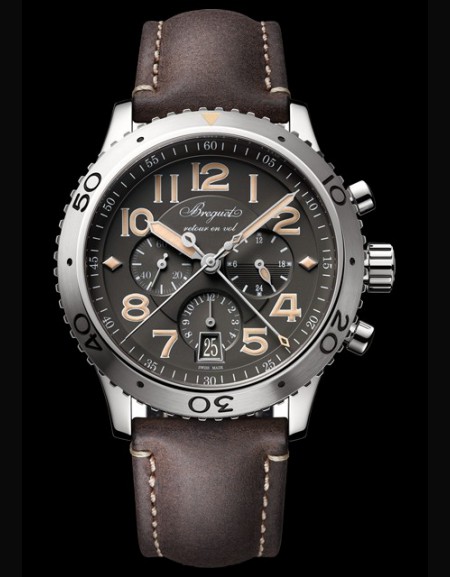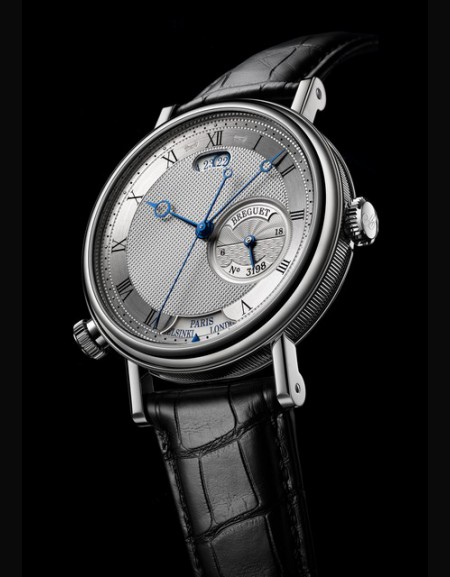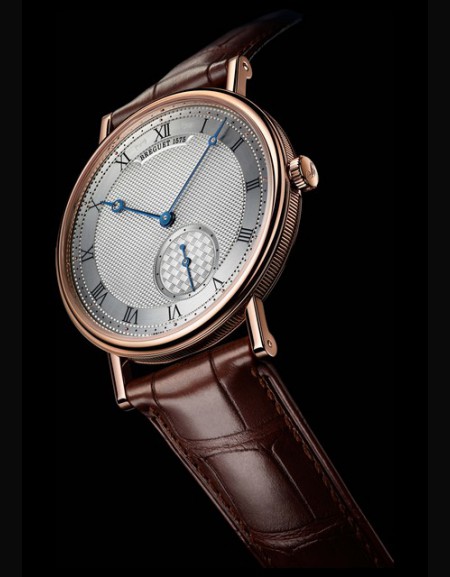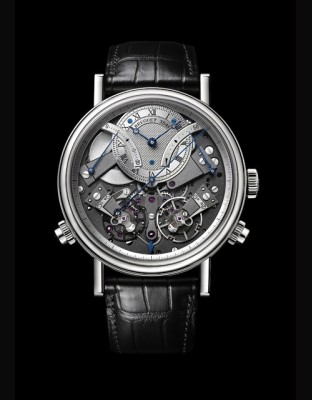1
breguet

|
||
If Breguet holds a special place in our cultural heritage, it is because its founder, A.-L. Breguet (1747-1823), set the standard by which all fine watchmaking has since been judged. Today, his heirs at Breguet still make each watch as a model of supreme horological art.
A.-L.
Breguet was born in Neuchâtel, but it was in Paris that he spent most of his productive life. No aspect of watchmaking escaped his study, and his inventions were as fundamental to horology as they were varied. His career started with a series of breakthroughs: the dev...

THE COLLECTIONS

-
Classique Souscription 2025
SEE THE DATA SHEETBrand: Breguet
Collection: Classique
Ref: 2025BH/28/9W6
Price: 52 800 € -
Classique Double...
SEE THE DATA SHEETBrand: Breguet
Collection: Classique
Ref: 5345BR/1S/5XU
Price: ON REQUEST -
Marine Tourbillon...
SEE THE DATA SHEETBrand: Breguet
Collection: Marine
Ref: 5887PT/92/5WV
Price: 292 800 € -
Type XX Chronographe 2067
SEE THE DATA SHEETBrand: Breguet
Collection: Type XX
Ref: 2067ST/92/3WU
Price: 19 100 € -
Type 20 Chronographe 2057
SEE THE DATA SHEETBrand: Breguet
Collection: Type XX
Ref: 2057ST/92/3WU
Price: 19 100 € -
Classique
SEE THE DATA SHEETBrand: Breguet
Collection: Classique
Ref: 7337BB/12/9VU
Price: 48 200 € -
-
Marine Hora Mundi
SEE THE DATA SHEETBrand: Breguet
Collection: Marine
Ref: 5557BR/YS/5WV
Price: 77 400 € -
Tradition Quantième...
SEE THE DATA SHEETBrand: Breguet
Collection: Tradition
Ref: 7597BB/GY/9WU
Price: 43 400 € -
Marine Tourbillon...
SEE THE DATA SHEETBrand: Breguet
Collection: Marine
Ref: 5887BR/G2/9WV
Price: 240 800 € -
Classique Tourbillon...
SEE THE DATA SHEETBrand: Breguet
Collection: Classique
Ref: 5367PT/2Y/9WU
Price: 181 900 € -
Classique 7137
SEE THE DATA SHEETBrand: Breguet
Collection: Classique
Ref: 7337BR/15/9VU
Price: 48 200 € -
Classique 7137
SEE THE DATA SHEETBrand: Breguet
Collection: Classique
Ref: 7337BB/Y5/9VU
Price: 48 200 € -
Classique 7137
SEE THE DATA SHEETBrand: Breguet
Collection: Classique
Ref: 7137BR/15/9VU
Price: 44 800 € -
Classique 7137
SEE THE DATA SHEETBrand: Breguet
Collection: Classique
Ref: 7137BB/Y59/VU
Price: 44 800 € -
BREGUET MARINE ALARME...
SEE THE DATA SHEETBrand: Breguet
Collection: Marine
Ref: 5547TIG2TZ0
Price: 35 000 € In StockIn Stock -
Marine By Breguet Robust...
SEE THE DATA SHEETBrand: Breguet
Collection: Marine
Ref: 5527TI/G2/TW0
Price: 27 100 € -
Marine 5517 In Titanium
SEE THE DATA SHEETBrand: Breguet
Collection: Marine
Ref: 5517TI/G2/TZ0
Price: 22 400 € -
Classique 5177 Grand Feu...
SEE THE DATA SHEETBrand: Breguet
Collection: Classique
Ref: 5177BB/2Y/9V6
Price: 26 600 € -
Classique Tourbillon...
SEE THE DATA SHEETBrand: Breguet
Collection: Classique
Ref: 5395PT/RS/9WU
Price: 269 100 € -
Classique Tourbillon...
SEE THE DATA SHEETBrand: Breguet
Collection: Classique
Ref: 5395BR/1S/9WU
Price: 252 700 € -
Marine Alarme Musicale 5547
SEE THE DATA SHEETBrand: Breguet
Collection: Marine
Ref: 5547BR/12/9ZU
Price: 44 700 € -
Marine Chronographe 5527
SEE THE DATA SHEETBrand: Breguet
Collection: Marine
Ref: 5527BB/Y2/9WV
Price: 38 000 € -
-
Classique Tourbillon...
SEE THE DATA SHEETBrand: Breguet
Collection: Classique
Ref: 5367BR/29/9WU
Price: 165 600 € -
Marine Equation Marchante...
SEE THE DATA SHEETBrand: Breguet
Collection: Marine
Ref: 5887BR/12/9WV
Price: 209 500 € -
Marine Equation Marchante...
SEE THE DATA SHEETBrand: Breguet
Collection: Marine
Ref: 5887PT/Y2/9WV
Price: 258 200 € -
Classique 7147
SEE THE DATA SHEETBrand: Breguet
Collection: Classique
Ref: 7147BB/29/9WU
Price: 24 100 € -
Type XXI 3817
SEE THE DATA SHEETBrand: Breguet
Collection: Type XX
Ref: 3817ST/X2/3ZU
Price: 15 600 € -
Classique Hora Mundi 5727
SEE THE DATA SHEETBrand: Breguet
Collection: Classique
Ref: 5727BB/12/9ZU
Price: 73 600 € -
Classique 7147
SEE THE DATA SHEETBrand: Breguet
Collection: Classique
Ref: 7147BR/12/9WU
Price: 23 600 € -
Tradition Chronographe...
SEE THE DATA SHEETBrand: Breguet
Collection: Tradition
Ref: 7077BB/G1/9XV
Price: 89 400 €
If Breguet holds a special place in our cultural heritage, it is because its founder, A.-L. Breguet (1747-1823), set the standard by which all fine watchmaking has since been judged. Today, his heirs at Breguet still make each watch as a model of supreme horological art.
A.-L.
Breguet was born in Neuchâtel, but it was in Paris that he spent most of his productive life. No aspect of watchmaking escaped his study, and his inventions were as fundamental to horology as they were varied. His career started with a series of breakthroughs: the development of the successful self-winding perpétuelle watches, the introduction of the gongs for repeating watches and the first shock-protection for balance pivots.
Louis XVI and his Queen, Marie-Antoinette, were early enthusiasts of Breguet's watchmaking. Each watch from his workshops demonstrated the latest horological improvements in an original movement, mostly fitted with lever or ruby-cylinder escapements that he perfected.
A.-L. Breguet took refuge in Switzerland from the excesses of the French Revolution. He returned to Paris overflowing with the ideas that produced the Breguet balance-spring, his first carriage clock (sold to Bonaparte), the sympathique clock and its dependent watch, the tact watch, and finally the tourbillon, patented in 1801.
Breguet became the indispensable watchmaker to the scientific, military, financial and diplomatic elites of the age. His timepieces ruled the courts of Europe. For his most distinguished clients, Breguet designed his most remarkable piece, anticipating the wristwatch by two centuries for Caroline Murat, Queen of Naples, in 1810. Honours saluted his enormous contribution to horology.
Appointed to the Board of Longitude and as chronometer-maker to the navy, he entered the Academy of Sciences and received the Legion of Honour from the hands of Louis XVIII.
When he died in 1823, all mourned the architect of the greatest revolution in the science and art of time-keeping.
Today more than ever, its capacity to innovate reflects a brand's vitality. Breguet's own creative powers and ingenuity have certainly not declined over time. Driven by Nicolas G. Hayek, they have indeed been amplified, resulting in Breguet filing in eight short years, a number of patent applications exceeding that of its founder's own inventions.
